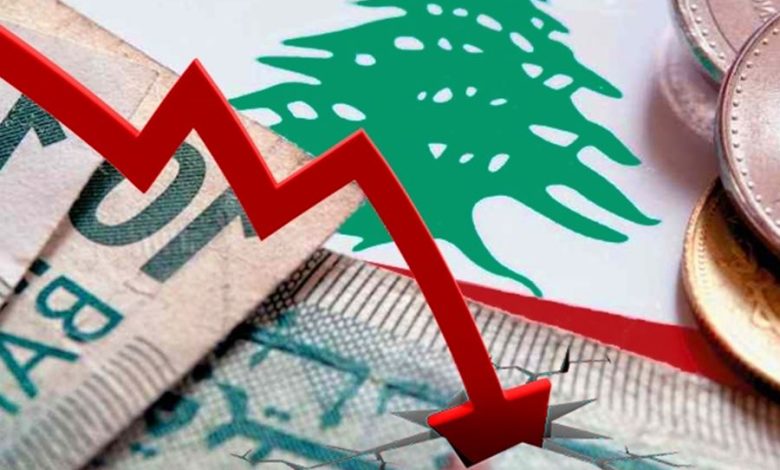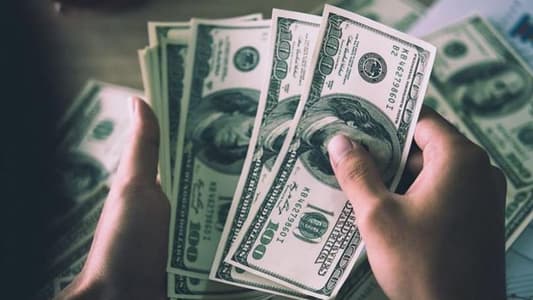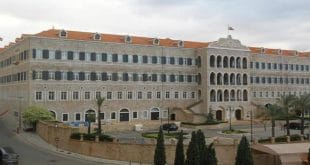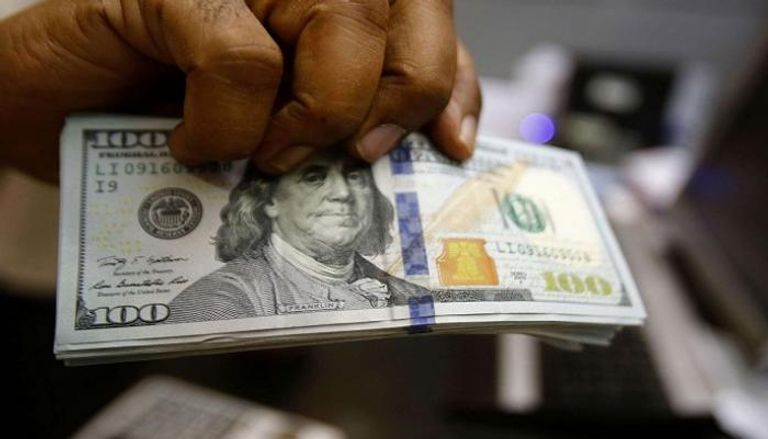هل يمكن أن ينكمش الاقتصاد اللبناني أكثر مما هو عليه الآن؟ في المسار الطبيعي، من دون أي عوامل خارجية، من الصعب الاستنتاج بأن النشاط الاقتصادي سينكمش أكثر مما بلغه حتى الآن. وبحسب رأي عدد من الاقتصاديين، فإن معالم الناتج المحلّي الحالية أصبحت واضحة. اليوم؛ إذ يتلقّى لبنان نحو 7 مليارات دولار من التحويلات الآتية من الخارج والتي تُشكّل العصب الأساسي للاقتصاد ونسبتها 30% من الناتج المحلي. كما يُصدّر لبنان بنحو 3 مليارات دولار، ويستقبل زوّاراً ينفقون بما لا يتجاوز ثلاثة مليارات دولار، ويتلقى مساعدات للسوريين واللبنانيين، تبلغ في حدّها الأقصى نحو ملياري دولار، ما يترك مجالاً للنشاط الداخلي بقيمة تصل إلى 6 مليارات دولار. تفكيك مكوّنات الناتج تشي بوجود صعوبة في انكماش كبير لا يرتبط بانكماش التدفقات أو المساعدات، إذ إن ثلثي الاقتصاد مموّل من الخارج وينطوي على مخاطر التقلبات الخارجية.
الاقتصاد إلى أين؟ هذا السؤال يجسّد الواقع الحالي للحركة الاقتصادية في لبنان. وهذا هو الشكل النهائي للاقتصاد اللبناني بعد الأزمة. فمع استمرار المسار المُتّخذ اليوم، وهو عبارة عن وقوف الدولة موقف المتفرّج من دون أي تدخّل يهدف إلى دفع النمو الاقتصادي والحركة الاقتصادية، لا يمكن أن تتقلّص هذه العوامل التي تُشكّل الحركة الاقتصادية أكثر مما هي عليه اليوم. فلا التدفقات ستتقلّص (من دون حدوث أمر استثنائي)، ولا الصادرات ستتقلّص، وهي التي استطاعت أن تتخطّى الأزمة والظروف القاهرة التي فرضتها على بيئة الإنتاج في البلد. والحركة الاقتصادية المحليّة تأقلمت مع هذا الواقع الجديد، ومن الصعب أن تتقلّص أكثر من ذلك. وأخيراً، المساعدات القادمة إلى البلد هي في أقل مستوياتها منذ زمن، بسبب القرار السياسي الخارجي بتخفيضها إلى أدنى المستويات.
الوضع الحالي هو عبارة عن استقرار في القعر، فمسار الانحدار وصل إلى نهايته، ليس بسبب قيام الدولة اللبنانية بأي إجراءات مضادة للأزمة، وهي لم تفعل ذلك أصلاً، بل لأن ما حصل حتى الآن هو أقصى الأضرار على الصعيد الاقتصادي. دينامية الاقتصاد والمجتمع في لبنان هي التي تفرض هذا الاستقرار في هذا المستوى من القعر. وفي المقابل، لا يوجد أي مسار نمو حقيقي في الأفق، وكل التفاؤل الذي كان مطروحاً (قبل بداية الحرب) عن نمو بسيط كان مُقدراً للاقتصاد اللبناني أن يعيشه في 2023 و2024، هو زيادة طبيعية. فمع مرور الوقت، يخرج المزيد من اللبنانيين ليستقروا خارج البلد، ومن الطبيعي أن يسهم هذا الأمر في ارتفاع حجم تدفقات التحويلات المالية من الخارج ما ينعكس ارتفاعاً بسيطاً في حجم الاقتصاد.
لكن، هل هذا ما يُمكن أن يُعتمد عليه لمستقبل الاقتصاد اللبناني؟ الأكيد أن هذا المسار لا يجعل الاقتصاد اللبناني مقاوماً للأزمات الداخلية ولا الخارجية. بل، يمكن القول إن الاقتصاد اللبناني اليوم مكشوف تماماً أمام أي أزمة خارجية (مثلما حدث في الأزمة المالية العالمية في 2007-2008)، وهو ما يمكن أن ينعكس على التدفقات المالية من الخارج. وهو أصلاً عودة إلى نموذج الريع الذي بُني عليه الاقتصاد اللبناني قبل الأزمة، والذي كان من المفترض استغلال الأزمة للخروج منه. الحل الوحيد للخروج من هذا القعر هو تحفيز الحركة الإنتاجية داخل البلد، ما شأنه أن يُوسّع الحركة الاقتصادية المحليّة بشكل أساسي، ويزيد من الحركة التصديرية، وهذا ما يمكن أن يدفع نحو النمو الصلب والمستدام.
ماذا عن الحضيض الاجتماعي؟
الحضيض الحقيقي ليس ذلك الاقتصادي، أو ما يظهر في الحركة الاقتصادية، بل هو الحضيض الاجتماعي وما ينتج منه من تغيرات هيكلية في الديموغرافيا والطبقات الاجتماعية وغيرها من النتائج المترتبة على واقع الحضيض الاقتصادي. هي نتائج ضمور دور الدولة، الذي كان يُشكّل، مع حدّه الأقل، نوعاً من شبكة الأمان الاجتماعية، سواء أكان عبر التعليم الرسمي، أم الضمان الاجتماعي، أم تغطيات وزارة الصحّة. صحيح أن هذا الشكل لم يكن الأنسب من ناحية العدالة الاجتماعية، ولكنه في نهاية الأمر كان شبكة أمان للمجتمع. مع خروج هذه الشبكة من الخدمة، أصبح المجتمع مكشوفاً أمام نتائج الواقع الاقتصادي الذي وصل إلى الحضيض.
المصدر: ماهر سلامة – الاخبار
**Economic Collapse: Have We Hit Rock Bottom?**
**Can the Lebanese economy contract more than it has now?** Under normal conditions, without any external factors, it is difficult to conclude that economic activity will shrink more than it has to date. According to some economists, the current state of the Gross Domestic Product (GDP) is clear. Today, Lebanon receives about $7 billion in remittances from abroad, which form the backbone of the economy and represent 30% of the GDP. Lebanon exports approximately $3 billion, welcomes visitors who spend no more than $3 billion, and receives aid for Syrians and Lebanese amounting to around $2 billion. This leaves room for internal activity worth about $6 billion. Breaking down the components of GDP indicates that significant further contraction is unlikely unless there is a decrease in inflows or aid, as two-thirds of the economy is funded from abroad, which involves risks from external fluctuations.
**Where is the economy heading?** This question reflects the current reality of economic activity in Lebanon. This is the final shape of the Lebanese economy after the crisis. With the current path of the state remaining passive without any intervention to stimulate economic growth, it is unlikely that these factors driving economic activity will contract further. Both inflows and exports have managed to withstand the crisis and the adverse conditions affecting the country's production environment. The local economic activity has adapted to this new reality, making further contraction difficult. Finally, external aid to the country is at its lowest levels due to external political decisions to reduce it to a minimum.
The current situation represents stability at the bottom, with the decline having reached its limit—not because of any counter-crisis measures by the Lebanese state (which has not implemented any), but because what has happened so far constitutes the maximum damage on the economic front. The dynamics of the Lebanese economy and society impose this stability at this level of the bottom. Meanwhile, there is no real growth trajectory on the horizon. Any optimism about modest growth that was anticipated for 2023 and 2024 has proven to be an expected increase. Over time, more Lebanese are settling abroad, which is naturally contributing to a slight rise in remittance flows and a modest increase in the economy.
**But can this be relied upon for the future of the Lebanese economy?** Clearly, this trajectory does not make the Lebanese economy resilient to internal or external crises. The Lebanese economy today is entirely exposed to any external crisis (similar to the global financial crisis of 2007-2008), which could reflect on financial inflows from abroad. It essentially returns to the rentier model upon which the Lebanese economy was built before the crisis, which was supposed to be exploited to exit this model. The only solution to emerge from this bottom is to stimulate domestic production, which would expand local economic activity and increase export activity, potentially driving solid and sustainable growth.
**What about the social low?**
What the Lebanese economy has reached today is indeed a social low. However, this does not fully reflect the economic situation's impact on society, as these results depend on accumulation and can worsen over time. This accumulation is also related to previous positive accumulations. For instance, many Lebanese families have adapted to the new reality by using previously accumulated assets such as gold and real estate, rather than funds held in the banking sector. These assets, which are either accumulated by the current generation or inherited from previous generations, are now diminishing as families use them to cope. Some families have sold their gold or land to fund their children's education or obtain medical services no longer covered by social security or the Ministry of Health.
With the erosion of these assets, the true social impacts begin to appear, including structural changes in social classes and an expanding wealth inequality gap. In the current reality, some are selling their assets for consumption, while others are buying these assets to preserve their money's value. Thus, there is a certain social class whose wealth is decreasing, while the wealth of the affluent class is increasing, directly reflecting the widening gap.
The true low is not economic or apparent in economic activity but is the social low resulting from structural changes in demographics, social classes, and other effects of the economic low. It is the result of the state's diminished role, which previously provided, at its minimum, a form of social safety net, whether through public education, social security, or health coverage. Although this system was not ideal in terms of social justice, it nonetheless served as a safety net for society. With this safety net out of service, society is exposed to the consequences of the economic situation that has reached rock bottom.
translated by economyscopes team
 سكوبات عالمية إقتصادية – EconomyScopes إجعل موقعنا خيارك ومصدرك الأنسب للأخبار الإقتصادية المحلية والعربية والعالمية على أنواعها بالإضافة الى نشر مجموعة لا بأس بها من فرص العمل في لبنان والشرق الأوسط والعالم
سكوبات عالمية إقتصادية – EconomyScopes إجعل موقعنا خيارك ومصدرك الأنسب للأخبار الإقتصادية المحلية والعربية والعالمية على أنواعها بالإضافة الى نشر مجموعة لا بأس بها من فرص العمل في لبنان والشرق الأوسط والعالم




